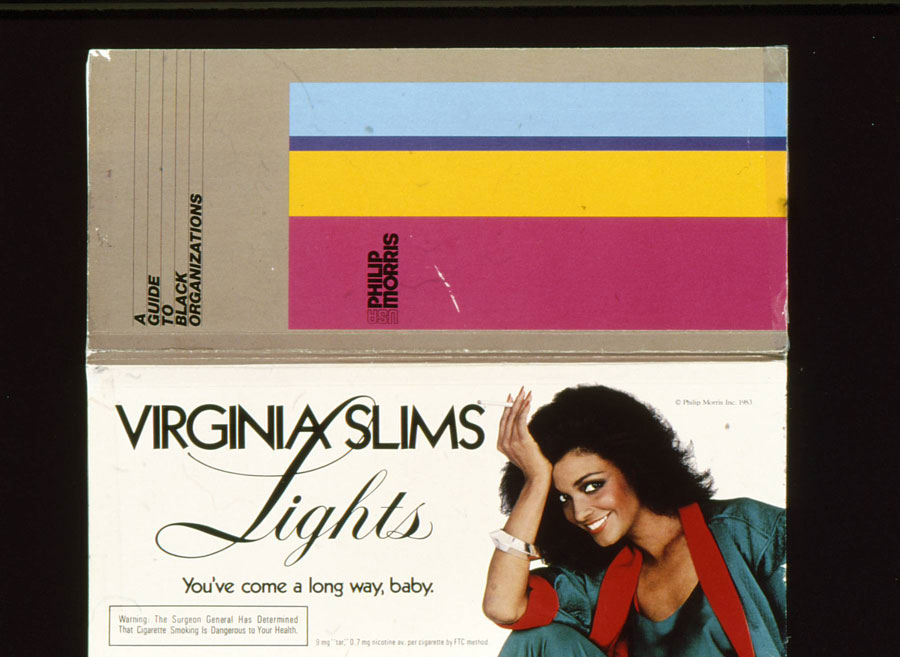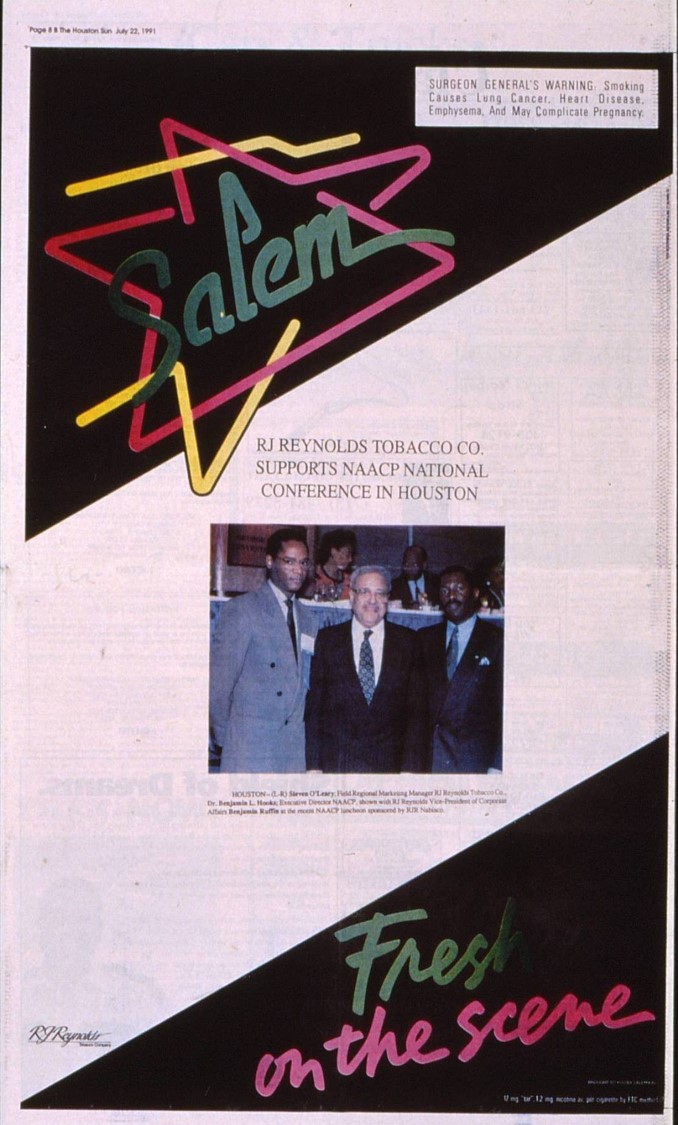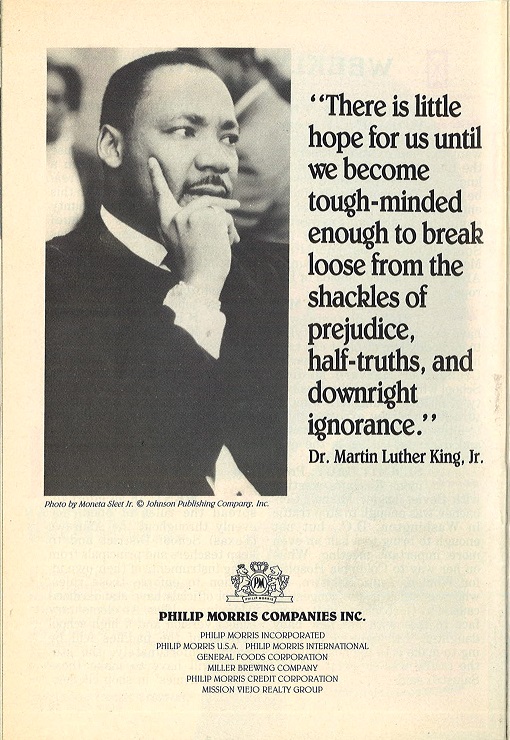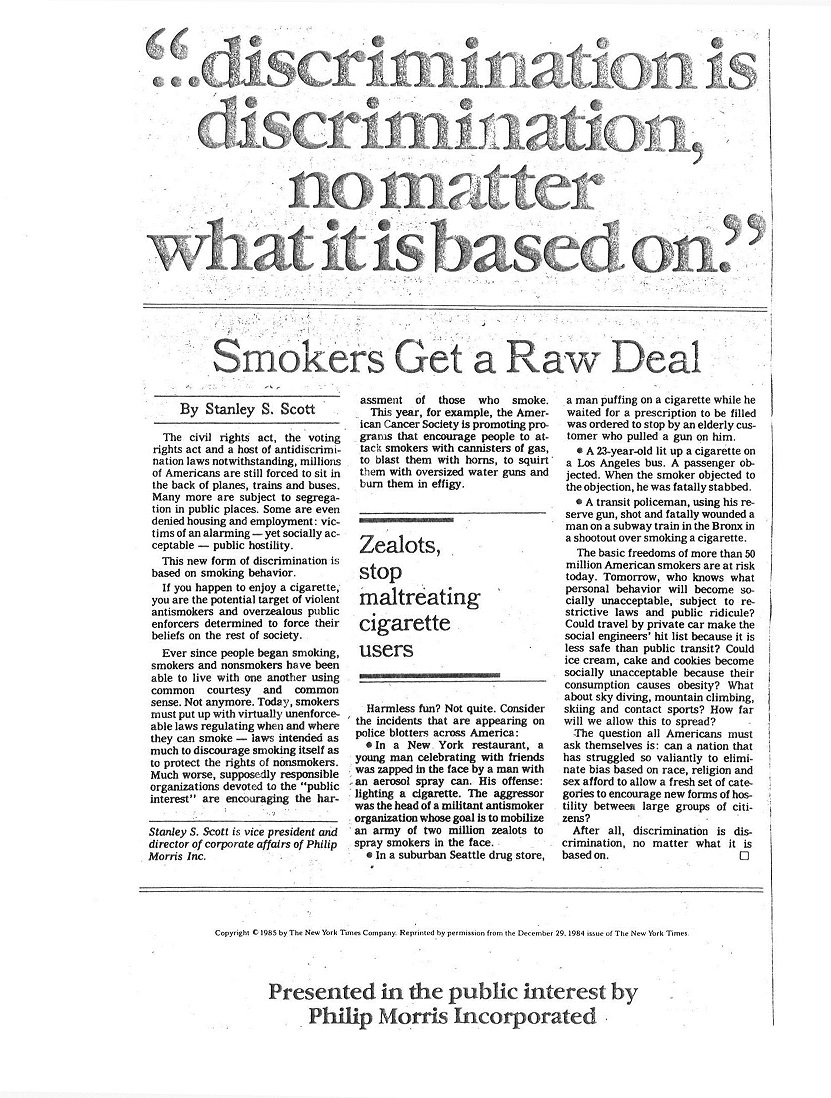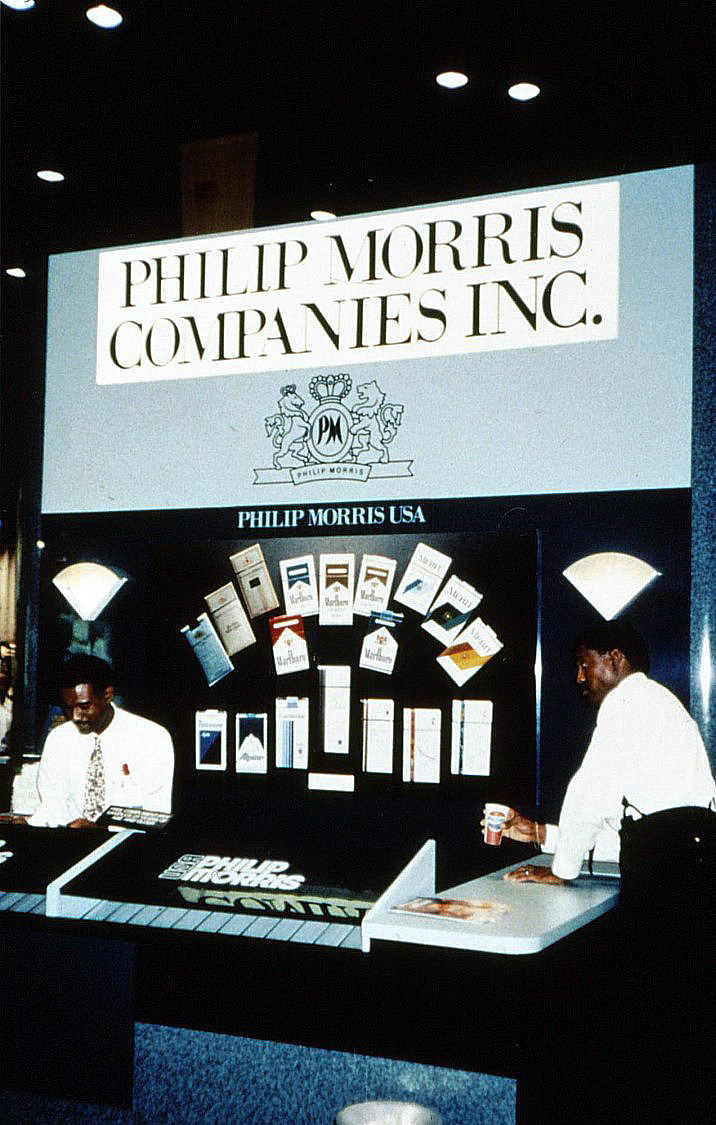- Minorities & Smoking – Home
- Taking Notice
- The Power of Tobacco Marketing ▼
- A History of Marketing Menthol to Minorities
- Supporting and Suppressing Minority Communities ▼
- Targeting Latinos
- Targeting Minority Women: A Marginalized Market
- Family Smoking Prevention and Tobacco Control Act
- The DOC Response
- Recent Struggles
Documents (Click a Title to View More...)
“The Targeting of Minority Groups by the Tobacco Industry”
Chapter by Alan Blum, MD
Minorities and Cancer, pages 153-162
1989
“Targeting of Minorities by Cigarette Advertising”
Transcript of testimony by Alan Blum, MD, before the U.S. Department of Health & Human Services Interagency Committee on Smoking and Health
Interagency Committee on Smoking and Health National Advisory Committee Proceedings: The Impact of Cigarette Smoking on Minority Populations, pages 56-71
March 31, 1987
“Black press: friend of tobacco industry or Black people?”
News article by James Muhammad
The Final Call, pages 7 and 29
March 19, 1988
“Cigarette smoking and ill health among black Americans”
Journal article by Richard Cooper, MD, and Brian E. Simmons, MD
New York State Journal of Medicine, vol. 85, no. 7, pages 344-349
July 1985
News article by Ellen Schultz about the tobacco industry’s marketing efforts aimed at blacks
Adweek Special Report, pages 32 and 34
April 6, 1987
“Sign of the Times: ‘Sin’ Ads Target Blacks”
News article by Cynthia Durcanin
The Atlanta Journal, pages 1A and 14A
March 26, 1989
“Limit tobacco sale to youth, Sullivan urges”
News article
The Atlanta Journal, pages A1 and A6
May 24, 1990
“Black Press & Tobacco Industry”
Editorial
National Black Monitor, page 4
July 1990
“Tobacco companies target blacks”
News article by Todd Ackerman
1991
“Tobacco money buys minorities’ political support”
News feature article by Alan Blum, MD, and Eric Solberg
Tobacco Control, vol. 1, no. 4, pages 245-246
December 1992
“Blacks and the Tobacco Industry”
News article by Claudia Morain about the tobacco industry’s numerous ties to African-Americans
The Fort Worth Star-Telegram
April 5, 1994
Newsletter published by the HealthONE Center for Health Sciences Education in Denver, Colorado
Nico-Notes, vol. 4, no. 3
Summer 1995
“Top 50 Companies for Diversity”
DiversityInc magazine with laudatory comments about one of its major sponsors, Altria (Philip Morris), front cover and pages 12, 72, 74, 78, 82, 84, and 92
June 2005
Correspondence related to the criticism of the distribution of DiversityInc’s June 2005 issue by M.D. Anderson Cancer Center, raised by Alan Blum, MD; letters by Alan Blum, MD; Lovell A. Jones, PhD, director of the University of Texas M.D. Anderson Cancer Center – Center for Research on Minority Health; and Stephen P. Jiang, MD, chairman of the Intercultural Cancer Council
September-December 2005
“Sui-Genocide: The Killing of Minority Groups by the Tobacco Industry” (56:12)
Talk presented by Doctors Ought to Care (DOC) features a discussion by Alan Blum, MD
1989
Anne Browder of the Tobacco Institute
Still frame photograph of CBS television news story featuring an industry spokesperson refuting claims that diseases caused by smoking disproportionately affect African Americans
January 1978
NAACP Executive Director Benjamin Hooks with R. J. Reynolds representatives
R. J. Reynolds Tobacco Company promotional advertisement for its support of the 82nd Annual NAACP National Conference
The Houston Sun, page 8B
July 22, 1991
Smoking and Genocide
Brochure published by the American Cancer Society (discontinued after first printing)
1981
“‘There is little hope for us until we become tough-minded enough to break loose from the shackles of prejudice…’”
Philip Morris advertisement commemorating Martin Luther King Jr. Day
Jet, page 20
January 18, 1988
News Reports on Minorities and Tobacco
Dr. Bob Arnot - Blacks and Smoking
“Tobacco companies spend millions of dollars trying to get blacks to smoke”
Video clip of CBS news story reported by Dr. Bob Arnot
1986
Bob Faw - "Targeting the Black Community"
“One group targeted by cigarette manufacturers is the black community”
Video clip of CBS news story reported by Bob Faw
1986
“‘…discrimination is discrimination, no matter what it is based on.’”
Advertisement with reprint of op-ed column by Stanley S. Scott, vice president and director of corporate affairs for Philip Morris, claiming discrimination against smokers
The New York Times
December 29, 1984
Philip Morris Companies Inc. booth
Exhibitor booth at the 82nd Annual NAACP National Convention at the George R. Brown Convention Center, Houston, Texas
Photograph by Alan Blum, MD
July 1991
Alan Blum, MD, on Stanley S. Scott, vice president of corporate affairs for Philip Morris. (2:40)
Supporting and Suppressing Minority Communities
The prevailing opinion of researchers in minority health issues is that African Americans and Latinos live outside the mainstream and rely heavily on television, newspapers, and magazines owned and operated by members of their own ethnic groups for the definition and expression of their worldviews. According to this view, these populations suffer disproportionately from smoking-related death and disease at least in part because of the cultivation of financial ties by the tobacco industry to the very cultural institutions that exert the most influence on the social, political, and intellectual life of minority communities. Researchers further assert that educational approaches focused solely on changing adverse health behaviors are incomplete in the absence of efforts to question the relationship between the tobacco industry and community organizations.
Few if any major visible national, state, or local civic, fraternal, or even health-related minority organizations lack a tobacco industry connection. Through such willful ignorance of the tobacco pandemic, the problem has not come to be regarded as a priority in the black community. In the 1980s and 1990s, questions about the subservience of African-American publishers to the interests of tobacco advertisers were rebuffed as paternalistic. Indeed, minority publishers expressed gratitude for the financial contributions of tobacco advertisers that enabled the preservation of the minority press and other cultural institutions.
In spite of increased attention during the past several decades devoted to the subject of tobacco use and promotion among minority groups, there has been little documentation and scant dispassionate analysis in either the public health literature or the minority press of the ramifications of the widespread financial support by the tobacco industry of influential organizations in minority communities. At the same time, cigarette manufacturers have missed few opportunities to trumpet their contributions to the well-being of emerging population groups, the sick, and the needy. This is evidenced by the following excerpts from RJR Nabisco’s 1987 publication, A Growing Presence in the Mainstream, which was handed out in the company’s exhibit booth at meetings of minority organizations:
“Our primary obligation is..."
“Our primary obligation is to be a good steward of our shareholders’ investments, by wisely employing human and material resources. But we also feel a strong responsibility to serve society, by being a conscientious corporate citizen. Being a good corporate citizen means contributing to the betterment of life in the communities where we do business – helping to move society forward. One aspect of corporate responsibility which we take very seriously is helping minorities and women. We intend to do everything possible to help minorities and women move fully into the mainstream of American businesses. Expanding economic development among minorities and women is one fundamental way that their lives can be improved… [but] our interest in minorities and women is not limited to the economic sphere. We will also continue to offer assistance to the important segments of our population to help in achieving educational, political, and cultural aspirations. Therefore, we will not relax our efforts to provide strong financial support to scholastic, civic and artistic programs for minorities and women.”
Such industry publications provided the impression of generosity and compassion, while admittedly maintaining the foremost objective of protecting shareholders’ interests.
George Knox of Philip Morris – “Our friend, our brother, our comrade”
Audio clip of the Reverend Benjamin Hooks praising Philip Morris for sponsoring the Spingarn Medal Awards Dinner at the 1990 Annual Convention of the NAACP.
More On: The Tobacco Industry Supports and Suppresses Minority Communities
Contact
Alan Blum, M.D., Director
205-348-2886
ablum@ua.edu
© Copyright - The Center for the Study of Tobacco and Society



